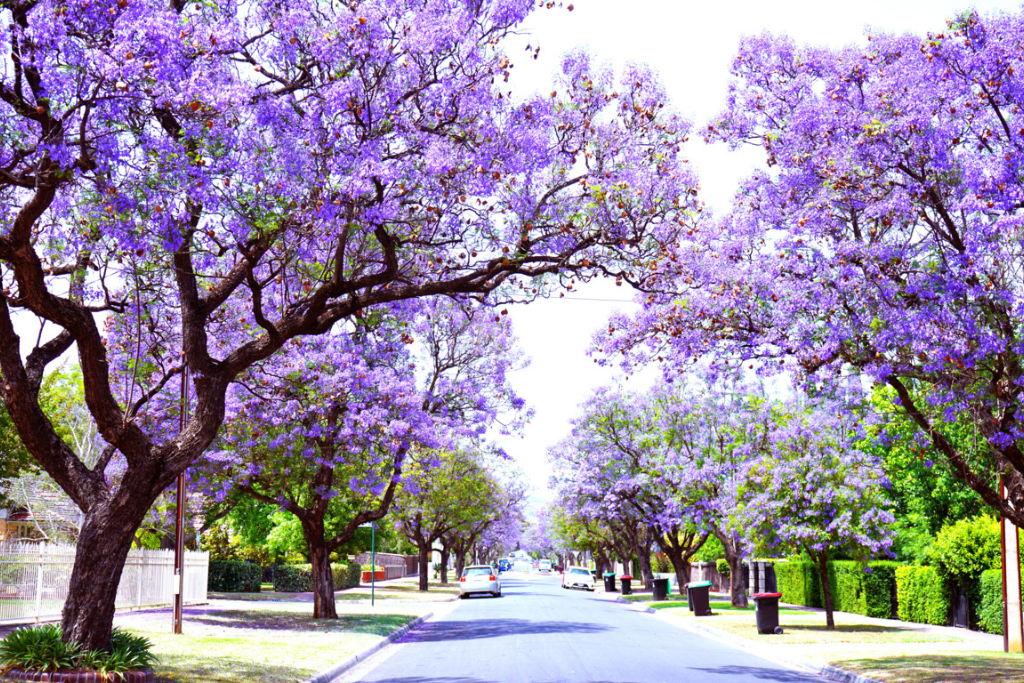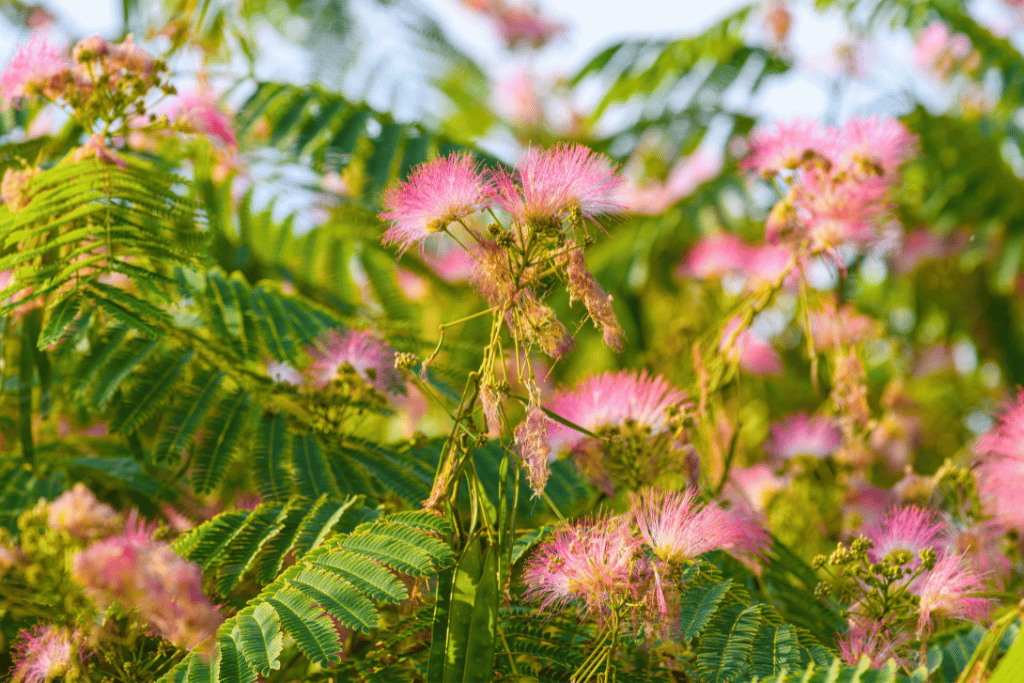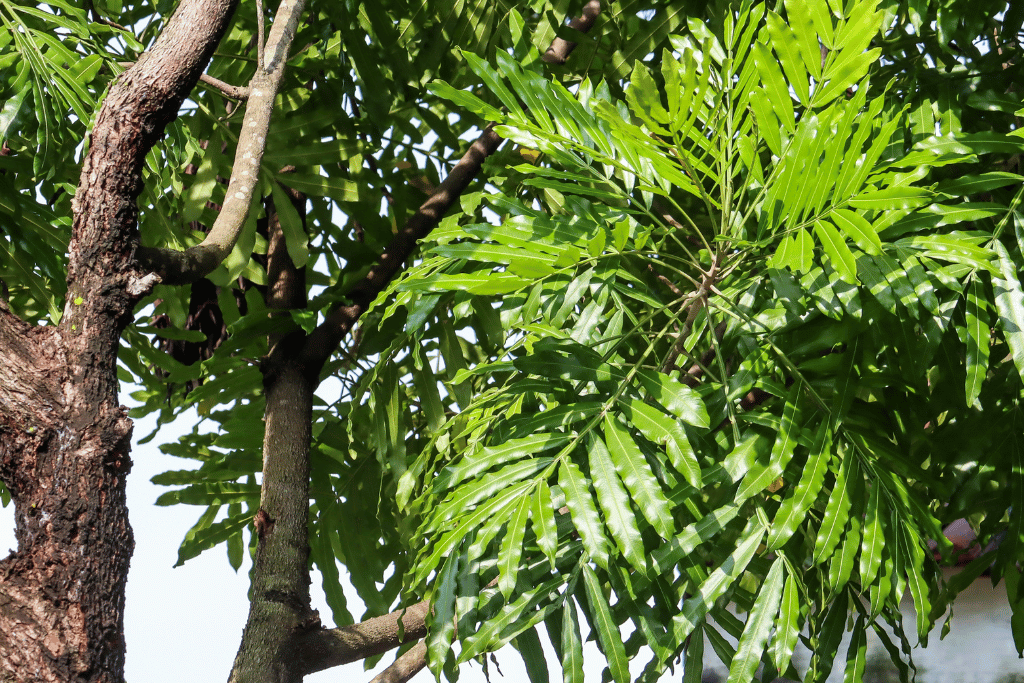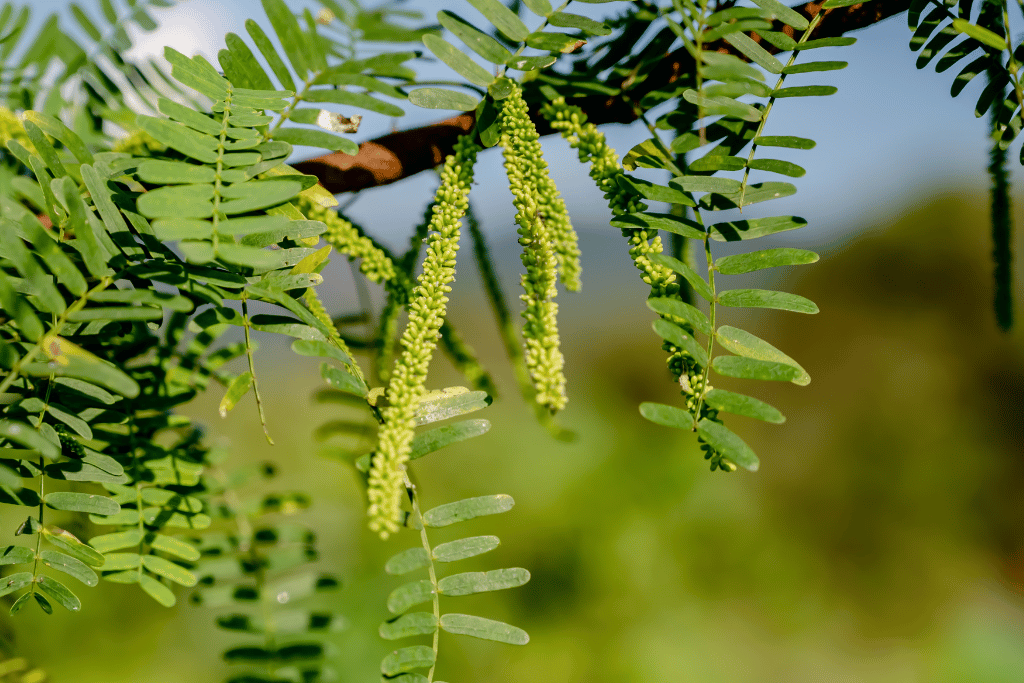
Strolling in the park on a breezy summer evening, I noticed a wondrous tree with fern like leaves. It was enormous and majestic – standing tall like an elegant object – its leaves swaying gently in the wind. Captivated by its delicate beauty, I decided to learn more about trees of this kind.
Turns out, these trees are not only beautiful but also multifunctional. While some species serve as timber and others offer medicinal benefits, many have been used in traditional ceremonies and rituals.
I was both curious and astonished to discover the many varieties and their delightful features. This article is a compilation of my findings – some of the most beautiful trees with fern like leaves! So, let’s get to know them in detail.
Top 7 Trees With Fern Like Leaves
1. The honey locust (Gleditsia triacanthos)

Have you ever seen a large tree with fern like leaves? Well, witness the honey locust! This tree stands out in a crowd due to its unique size and appearance. Growing up to the sky-scraping heights of 100 feet and with a wide spread of 70 feet, it is a sight to behold!
Its trunk is covered in thorns that can reach a formidable 6 inches long – no pests or animals will be climbing it anytime soon! With its beautiful fern-like leaves arranged in a pinnate pattern, it adds an ethereal grace to the landscape. Come autumn and these leaves turn a gorgeous yellow hue, bringing life and color to its surroundings.
The honey locust has been used by Native Americans for various purposes in the past. From its thorns being used for sewing and medicinal purposes to its wood being utilized for furniture, flooring and bows – the tree has many uses. Additionally, its pods which contain a sweet pulp can be eaten raw or processed into flour as a nutritious food source.
2. Mimosa – Silk tree

The Mimosa tree, which stands tall at 20-40 feet, is known for its fern-like leaves that shut up tight at night or when touched, making it the ‘Sensitive Plant’. Its tiny leaflets create a lacy appearance. Then there are those beautiful pink flowers that bloom in summer – each one fragrant and sure to draw the attention of hummingbirds, bees and butterflies.
Though it has a limited lifespan – around 10-20 years – it grows quickly and provides lots of shade while it lasts. Regrettably, in some places like the southeastern US, Mimosa trees are considered invasive as they can knock out native species.
The tree has also been used medicinally in traditional Chinese medicine. The bark, leaves and flowers are said to have anti-inflammatory and pain-relieving properties. They may be employed to tackle anxiety, insomnia or other pains.
So if you ever come across a tree with fern like leaves and pink flowers – that’s probably a Mimosa or Silk tree. Take a moment to appreciate the beauty and remember its uses. You may never look at it the same way again.
3. Japanese fern tree – Filicium decipiens

The Japanese Fern Tree, or Filicium decipiens, is an evergreen tree with fern like leaves that will truly transform any landscape and give it a chic look. Growing up to 15 – 60 feet tall, with a spread of about 10 meters, this species is native to Southeast Asia and often cultivated in tropical regions all over the world. Its palm-like appearance has earned it the nickname of “Thika Palm”, despite not actually being a palm tree.
The Japanese Fern Tree is especially magnificent for its evergreen nature – while other trees may lose their leaves during winter, this species keeps its deep green foliage all year round, making it ideal for those looking to create year-round greenery. Its feather-like fronds lend it a fern-like appearance and attractively complete any garden or outdoor space.
For these reasons, the Japanese Fern Tree is highly sought for ornamental purposes in parks, gardens, and along streets and sidewalks. It’s one of those trees that you can always count on to add a touch of refined beauty and vibrancy to an outdoor area.
4. Blue jacaranda – Jacaranda mimosifolia

When grown to its full potential, the Blue Jacaranda can reach heights of 25-50 feet. This magnificent tree, scientifically referred to as Jacaranda mimosifolia, is renowned for its vivid blue-violet blooms. Originating from South America – specifically Argentina, Uruguay and Brazil – it’s been spread worldwide since then, with many regions in Asia, Africa and Australia now home to this gorgeous species.
It is a deciduous tree – meaning, it drops its leaves annually but only for a short period (usually during winter). The rest of the year it boasts airy foliage that gives off a light texture to any landscape. It can grow up to 60 feet and has a wide, spreading crown – making it an ideal shade tree.
The Blue Jacaranda’s most striking feature is its flowers – in springtime these trumpet-shaped flowers cover the entire tree with an amazing display of blue-purple color. Later on, seed pods containing numerous small flat seeds take over and get dispersed with the wind. It’s truly a breathtaking sight to behold!
5. Poinciana (Delonix regia)

The tree’s nickname is due to its vibrant and fiery appearance, with clusters of bright red and orange flowers that bloom during the summer months. Originating from Madagascar, the Poinciana tree has now spread across various tropical regions worldwide.
Reaching heights of 30-40 ft, the Poinciana tree has a wide trunk to match its expansive canopy of up to 50 ft. A firm base for its branches and leaves, it stands tall as a mighty symbol of nature’s beauty.
The tree’s fern-like leaves are another striking feature, with multiple tiny leaflets giving the appearance of a fern frond. These leaves are deciduous, meaning they shed during the winter months, and new foliage appears in the spring.
6. Velvet mesquite

The Velvet Mesquite is no ordinary tree: it’s capable of withstanding intense heat, a lack of water and even wildfires. With an intricate taproot system that allows for access to underground aquifers, it’s able to thrive in arid conditions. Its delicate leaves are composed of many small feathery leaflets – providing the tree with maximum sunlight exposure, as well as minimizing water loss through evaporation.
The Mesquite is a valuable species in its habitat – providing shelter to wildlife and being used for construction due to its strength and durability. Plus, the mesquite pods are edible and still harvested by indigenous people today for food. This tree can soar up to 50 feet in height and its beauty is undeniable. Truly, the Velvet Mesquite is a thing of beauty.
7. Copperpod (Peltophorum pterocarpum)

The Copperpod, also known as the Yellow Flame Tree, is a flowering species native to Southeast Asia and the Indian subcontinent. During dry seasons it displays immense beauty through its bright yellow flowers in clusters. Growing up to 82 feet in height with pinnate leaves of 4-8 pairs per stalk, these trees possess trumpet-shaped flowers that are fragrant and 2-3 cm in length. The fruit of the Copperpod is a flat pod with several seeds within, spanning around 10 cm.
In its native range, traditional medicine often uses the bark, leaves, and flowers of Copperpods to treat fever, coughs, diarrhea, and skin diseases. There is also a spiritual and mythological attachment to the tree in India. Beyond medicinal applications, Copperpods are often used for landscaping and as street trees because of their ability to tolerate pollution and drought.
Furthermore, inhabitants of these environments benefit from the presence of the tree due to its importance as a source of nectar and pollen for honeybees and other pollinators.
Frequently Asked Questions (FAQ)
What is the most common tree fern?
The most common tree fern is the Australian Tree Fern, also known as Cyathea cooperii. It is a popular plant in gardens and landscaping due to its attractive foliage and easy maintenance.
What plant is called the walking fern?
The plant commonly called the walking fern is Asplenium rhizophyllum. It gets its name from the fact that new plantlets can form at the tips of the fronds and grow out, giving the appearance of the plant “walking” across the ground.
Which is the rarest tree fern?
The rarest tree fern is Cyathea felina, a critically endangered species found only in a few locations including Australia, Malaysia, Indonesia and New Guinea.
How to manage a tree with fern-like leaves?
Fern-like leaves need regular trimming and pruning for a desired shape and size to be maintained on the tree. Keep it healthy through watering and fertilizing, plus avoid pest problems. All this will make sure your tree looks great.



